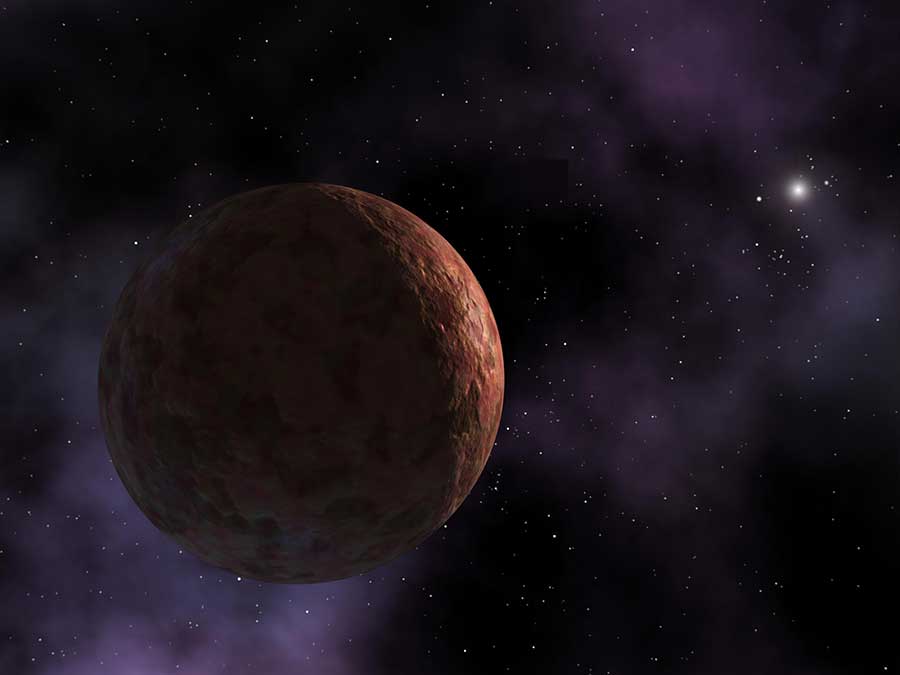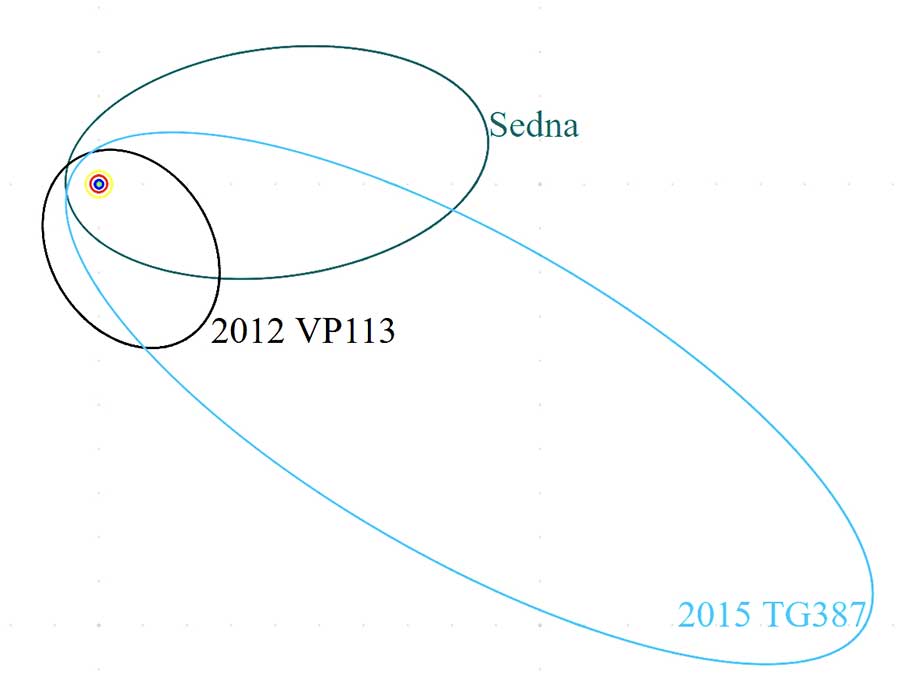A new understanding of far-off worlds in the outer solar system suggests that if “Planet X” ever existed, it has long since left the vicinity.

NASA / JPL-Caltech, with modifications by S&T
When Sedna was discovered more than a decade ago, its orbit — far beyond that of Neptune — baffled astronomers. Unlike most such far-out objects, Sedna never comes anywhere near Neptune. Its closest approach to the Sun is 76 , more than twice Neptune’s average distance.
Some encounter with a larger object must have placed Sedna on its path — but what? Might there be an undiscovered Planet X out there in the cold, dark reaches of the solar system? Based on this and related evidence, astronomers have been searching for this undiscovered planet. But so far, they’ve come up empty.
Now, new work presented by Yukun Huang (University of British Columbia, Canada) at the 55th meeting of the Division for Planetary Sciences of the American Astronomical Society suggests that there is no such planet — at least, not anymore. While encounters with an outer-outer planet could have established the orbits of Sedna and two other, more recently discovered “Sednoids,” that larger world must have been ejected from the solar system during its chaotic childhood 4.5 billion years ago.

Yukun Huan (University of British Columbia)
| Sednoid name | Semimajor axis | Perihelion | Inclination | |
| Sedna | 506 a.u. | 76 a.u. | 12∘ | |
| 2012 VP113 | 262 a.u. | 81 a.u. | 24.1∘ | |
| Leleākūhonua (2015 TG387) | 1090 a.u. | 65 a.u. | 11.7∘ |
What If There's No “Planet X”?
Huang asked: What if there is no undiscovered planet in the Kuiper belt? In that case, the orbits of the three Sednoids should have been stable over billions of years.
Galactic tides don’t affect them because, as far away as the Sednoids are, they’re still close enough to the Sun not to be influenced by those tides in a detectable way. At the same time, the worlds are so far away from the giant planets that they never experience close encounters that would bend their paths. The only force with a noticeable effect over time would be the combined gravitational effects of all four distant giant planets. But that force would not change the shape of the Sednoid orbits; it would only rotate those orbits around the Sun.
Using a computer simulation, Huang ran the solar system backward in time for billions of years. He found that the orbits of the three known Sednoids shared some remarkably similar properties just once, in the distant past: Not long after the birth of the solar system, their perihelia clustered at the same solar longitude, and their apsidal lines (the line passing through perihelion, the Sun, and aphelion) were also nearly coincident.
This orbital clustering is a telltale sign that a single event put the Sednoids onto their present paths, an event that happened during the solar system’s youth more than 4 billion years ago. It’s also a sign that nothing has disturbed the slow evolution of those orbits for 4 billion years. In other words, there is no undiscovered planet to be found today.
Huang’s work showed that the culprit could have been a primordial planet, ejected from the solar system only 100 million years after its formation. This rogue planet would now be long gone, orbiting the center of the galaxy rather than our Sun. Other explanations — such as a star from the Sun’s birth cluster passing close by — are also plausible; more work is needed.
The hypothesis that a single event placed the Sednoids on their paths is straightforward to test. If it’s true, then any Sednoids discovered in the future ought to share the same orbital characteristics when their orbits are run backward in time to the solar system’s youth. Astronomers continuing to survey the sky for more distant solar system worlds may find out that Planet X has left the building.
 0
0









Comments
You must be logged in to post a comment.